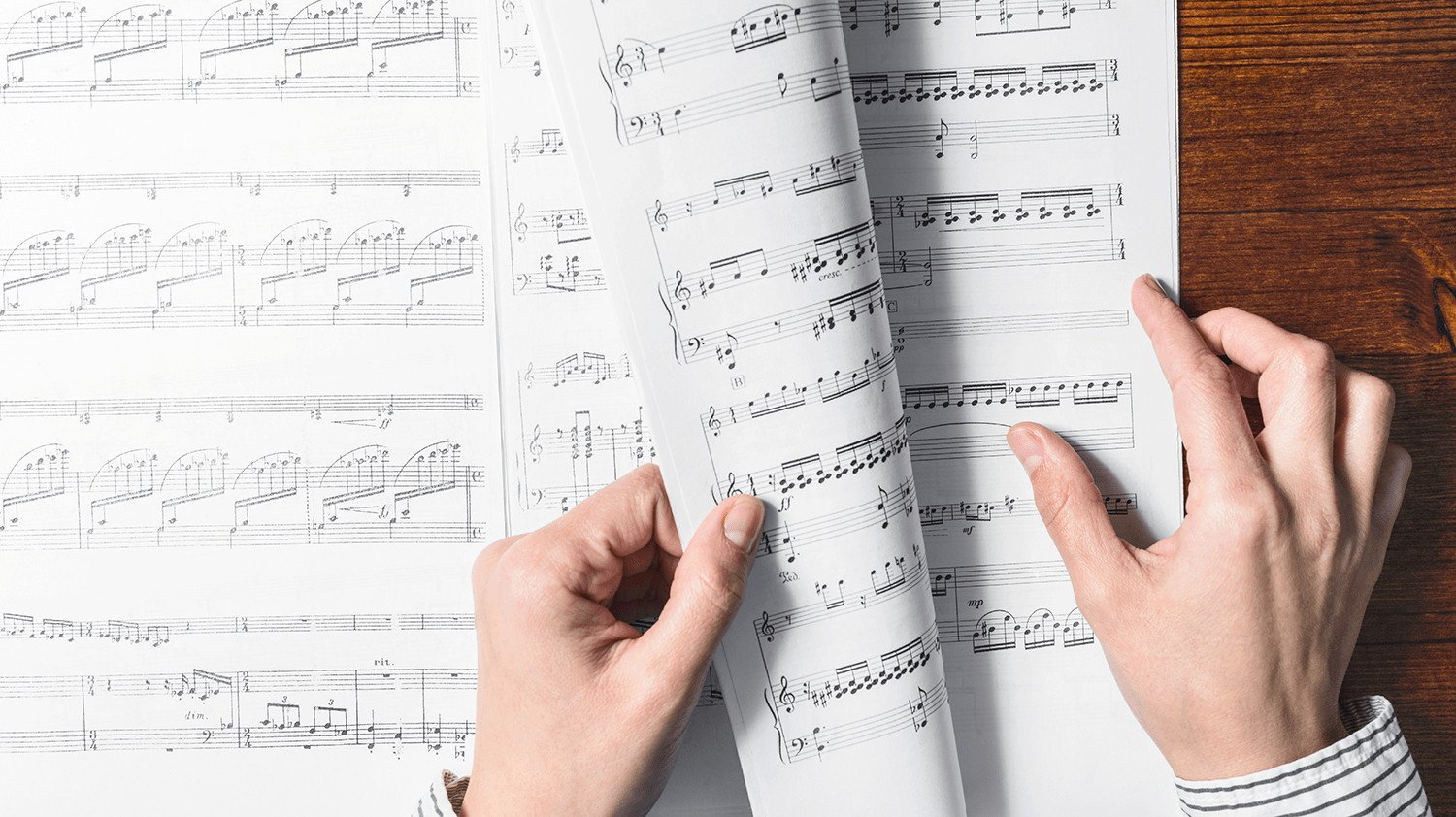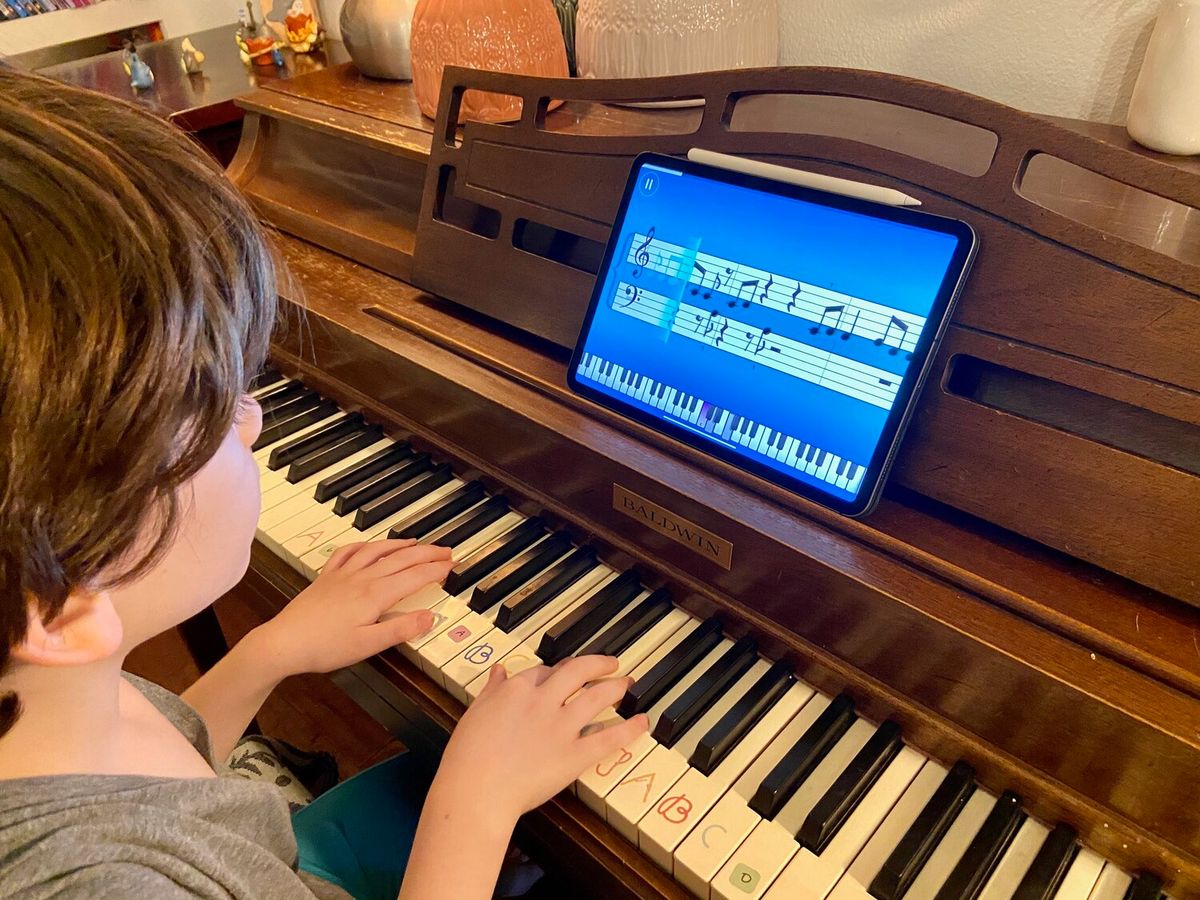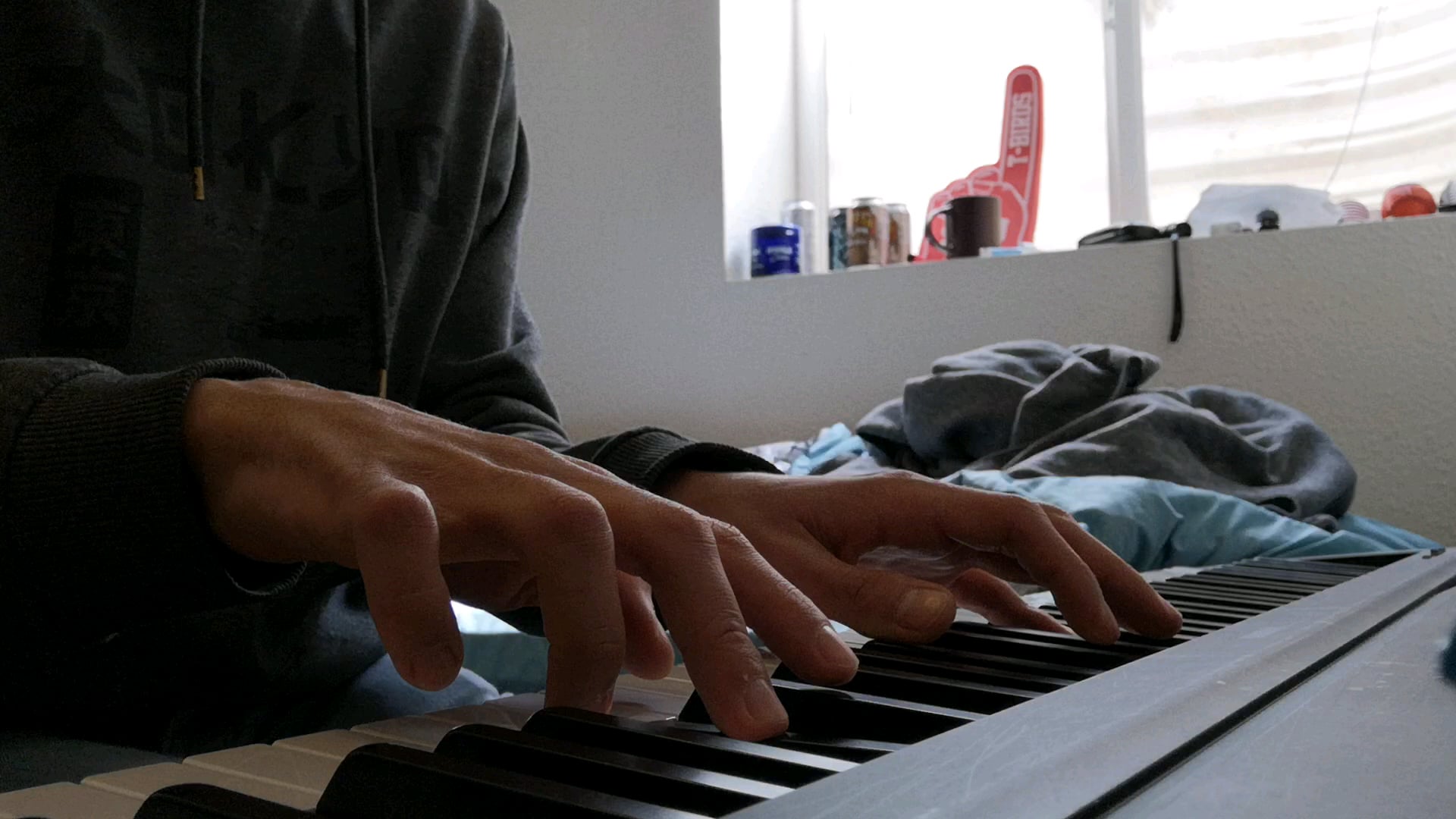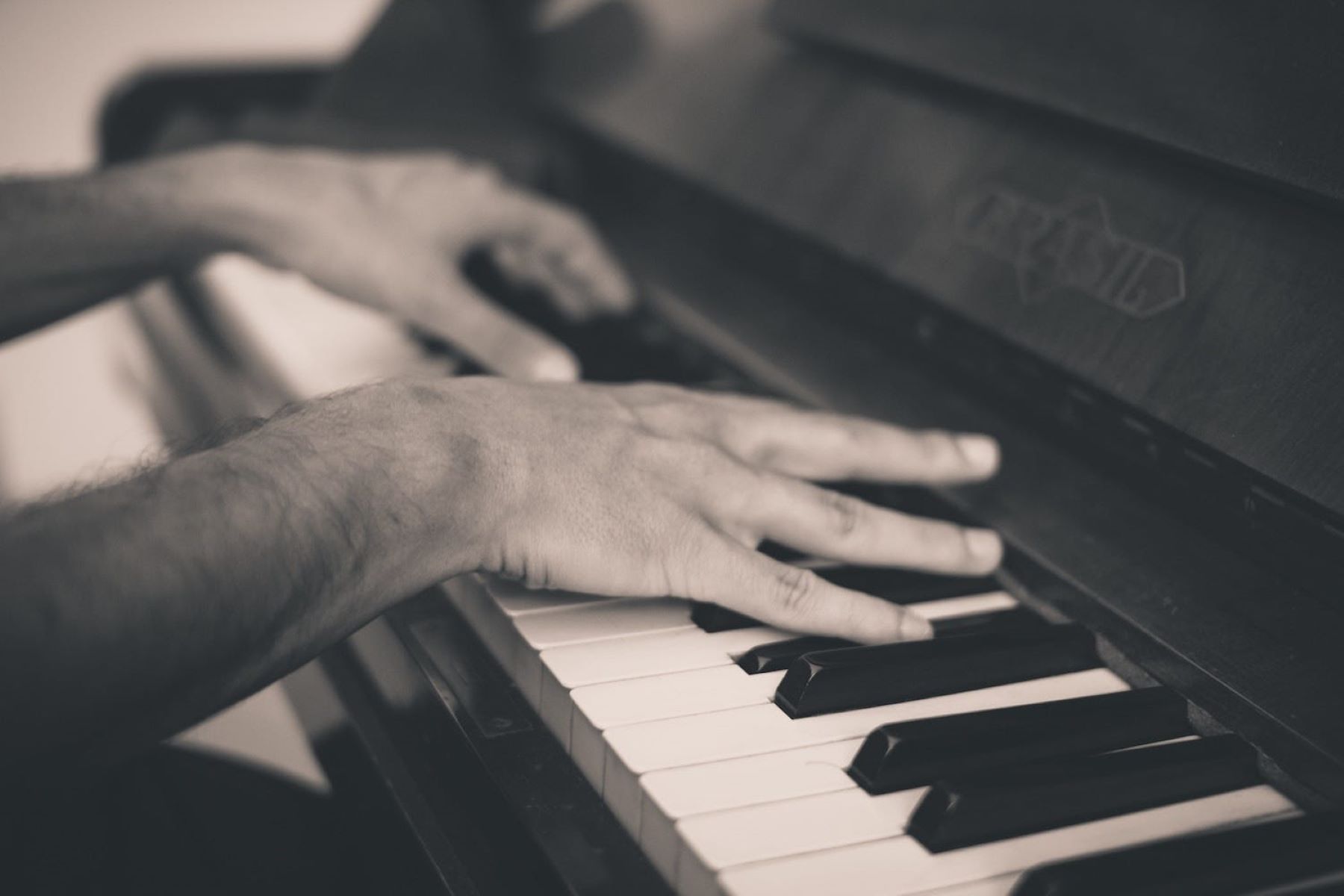Home>Production & Technology>Sheet Music>How To Play Sheet Music On A Piano


Sheet Music
How To Play Sheet Music On A Piano
Modified: February 10, 2024
Learn how to play sheet music on a piano with our comprehensive guide. Master the art of reading sheet music and unleash your musical potential.
(Many of the links in this article redirect to a specific reviewed product. Your purchase of these products through affiliate links helps to generate commission for AudioLover.com, at no extra cost. Learn more)
Table of Contents
- Introduction
- Choosing the Right Sheet Music
- Understanding the Basics of Sheet Music
- Familiarizing Yourself with the Piano
- Reading and Interpreting Sheet Music
- Practicing Sheet Music on the Piano
- Tips for Playing Sheet Music with Accuracy
- Adding Expression and Dynamics to Your Playing
- Troubleshooting Common Challenges
- Final Thoughts
Introduction
Sheet music is an essential tool for musicians, particularly those who play the piano. Whether you’re a beginner or an experienced player, being able to read and interpret sheet music opens up a world of musical possibilities. By following the notes and symbols on the sheet music, you can learn to play your favorite songs, discover new pieces, and improve your overall piano playing skills.
Understanding how to play sheet music on the piano can be a challenging endeavor, but with practice and dedication, it becomes a rewarding and enriching experience. In this article, we will explore the fundamentals of sheet music and provide tips and techniques for playing sheet music accurately and with expression.
From choosing the right sheet music to mastering the art of reading musical notation, this guide will take you on a journey to become proficient in playing sheet music on your piano. Whether you aspire to play classical compositions, popular songs, or even compose your own music, the knowledge and skills gained from playing sheet music will be invaluable.
So, let’s dive in and discover the world of sheet music, where melodies come to life and piano keys dance to the rhythm of your fingers.
Choosing the Right Sheet Music
When it comes to selecting sheet music for the piano, there are a few factors to consider to ensure an enjoyable and fulfilling learning experience. Here are some tips to help you choose the right sheet music:
- Level of Difficulty: Assess your current skill level to determine the appropriate difficulty level of the sheet music. Beginners should start with simple pieces specifically designed for novice pianists, while intermediate and advanced players can challenge themselves with more complex compositions.
- Genre and Style: Decide on the genre or style of music you want to play. Classical music, jazz, pop, or film soundtracks are just a few examples of the wide range of musical genres available. Choose sheet music that aligns with your musical taste and interests.
- Familiarity: Consider selecting sheet music for songs or compositions that you are already familiar with. Playing music that you love and recognize can provide extra motivation and make the learning process more enjoyable.
- Arrangement: Sheet music comes in various arrangements, from simplified versions to more intricate and original arrangements. Choose an arrangement that suits your skill level and personal preference.
It’s worth noting that there are different types of sheet music available. You can opt for traditional sheet music, which includes the musical notation with the melody and accompaniment, or you can choose lead sheets, which provide the basic melody and chord symbols, allowing you to add your own improvisations and embellishments.
Whether you prefer to purchase physical sheet music or utilize online resources, make sure to explore reputable sources to ensure accurate and high-quality sheet music. Many websites offer free or paid sheet music downloads, and there are also online communities where musicians share their own arrangements and transcriptions.
Remember, choosing the right sheet music sets the foundation for your piano playing journey. It’s important to find pieces that inspire and challenge you while also being within your technical abilities. By selecting sheet music that resonates with you, you’ll be motivated to practice and improve your piano skills with enthusiasm and joy.
Understanding the Basics of Sheet Music
Sheet music is a written representation of musical notation that allows musicians to interpret and perform a piece of music. Understanding the basics of sheet music is crucial for pianists to accurately read and interpret the notes and symbols on the page. Here are some fundamental elements of sheet music:
- Staff: The staff is a set of horizontal lines and spaces where the notes and symbols are placed. It consists of five lines and four spaces, representing different pitches in music.
- Notes: Notes are the core elements of sheet music, representing the pitch and duration of a sound. They are placed on the lines and spaces of the staff and can have different shapes, such as circles, ovals, or rectangles.
- Clef: The clef is a symbol placed at the beginning of the staff that indicates the pitch range of the notes. The most common clefs used in piano sheet music are the treble clef (G clef) and the bass clef (F clef).
- Key Signature: The key signature denotes the key of the music and is indicated by sharps or flats placed at the beginning of each staff line. It informs the pianist of the specific notes that may be raised or lowered throughout the piece.
- Time Signature: The time signature tells the pianist the number of beats in each measure and the type of note that receives one beat. Common time signatures include 4/4 (four beats per measure) and 3/4 (three beats per measure).
- Musical Notation Symbols: Sheet music also includes various symbols and markings, such as dynamics (indicating the volume of the music), articulations (how notes are played), slurs (indicating legato playing), and tempo markings (indicating the speed of the music).
It’s important to spend time familiarizing yourself with these basic elements of sheet music. Start by understanding the staff and note placement, then gradually learn about clefs, key signatures, and other symbols. Practice identifying and reading these elements on sheet music to develop your musical literacy.
As you progress in your piano journey, you’ll encounter more advanced notations and symbols, such as ornaments, pedal markings, and chord symbols. Continually expanding your knowledge of sheet music will enable you to tackle more complex pieces and better express your musical interpretations.
Familiarizing Yourself with the Piano
Before diving into playing sheet music on the piano, it’s essential to develop a good understanding of the instrument itself. Familiarizing yourself with the piano will greatly enhance your ability to interpret and perform the sheet music accurately. Here are some key aspects to consider:
- Keyboard Layout: Familiarize yourself with the layout of the piano keyboard. The traditional piano consists of 88 keys, with a pattern of alternating black and white keys. Understanding the arrangement of the keys and their relationship with the notes on the sheet music is crucial for accurate playing.
- Hand Placement: Learn the proper hand placement and finger positioning on the keys. The correct technique involves curving your fingers over the keys and using designated fingers for specific notes to ensure fluidity and efficiency in playing.
- Pedals: The piano typically has three pedals at the bottom that provide various effects. The rightmost pedal, called the sustain pedal, is the most commonly used. It sustains the sound of the notes, adding richness and depth to your playing. Understanding how and when to use the pedals is important for achieving the desired musical expression.
- Tone and Dynamics: Experiment with the different touch and pressure on the keys to produce varying tones and dynamics. The piano is a versatile instrument that allows for a wide range of expression, from soft and delicate to powerful and intense.
- Piano Maintenance: Keep your piano in good condition by regularly tuning and cleaning it. A well-maintained instrument ensures accurate sound production and helps you develop a good ear for pitch.
Take the time to practice scales, arpeggios, and finger exercises to strengthen your fingers and improve dexterity on the piano. These exercises will not only enhance your technical skills but also help you navigate the keyboard more confidently when playing sheet music.
Additionally, listening to piano recordings or attending live piano performances can provide you with inspiration and a deeper appreciation for the instrument’s capabilities. Observing experienced pianists and their approach to playing can also offer valuable insights and techniques to incorporate into your own practice.
Familiarity with the piano is the foundation for playing sheet music with accuracy and expression. By understanding the instrument’s layout, technique, and nuances, you’ll be better equipped to bring the notes on the sheet music to life and create beautiful music.
Reading and Interpreting Sheet Music
Reading and interpreting sheet music is a skill that every pianist must master to effectively play a piece. It involves understanding the symbols, notes, and markings on the sheet music and translating them into precise finger movements on the piano. Here are some tips for reading and interpreting sheet music:
- Note Identification: Familiarize yourself with the different notes on the staff and their corresponding keys on the piano. Practice identifying the notes quickly and accurately to improve your sight-reading abilities.
- Rhythmic Notation: Pay attention to the duration of each note and rest indicated by the rhythmic notation. Understand the difference between whole notes, half notes, quarter notes, eighth notes, and so on, as well as their corresponding rests.
- Key Signature: Take note of the key signature at the beginning of the staff. It tells you the key of the piece and indicates any sharps or flats that may be present throughout the music. Memorize the key signatures to simplify the process of reading and interpreting sheet music.
- Musical Expressions: Look for dynamic markings such as piano (soft) and forte (loud), as well as crescendos, decrescendos, and other expressive indications. These markings guide you in shaping the music and conveying the intended emotions.
- Chords and Harmony: Recognize and interpret chord symbols and harmonic progressions in the sheet music. This understanding allows you to add accompaniment or improvise harmonies to enhance the overall sound of the piece.
- Piano Technique: Understand various piano techniques such as legato (smooth and connected playing), staccato (short and detached playing), and accents. These techniques add depth and variety to your interpretation of the music.
In addition to these general tips, it’s important to approach each piece with an open and curious mind. Study the composer’s intentions and listen to recordings of the piece to gain insights into interpretation and performance. Experiment with different phrasing and articulation to bring your own musical interpretation to the piece.
Practice is key when it comes to reading and interpreting sheet music. Start with simple pieces and gradually work your way up to more complex compositions. As you become more comfortable and proficient with reading sheet music, you’ll be able to tackle more challenging and advanced repertoire.
Remember, sheet music is a guide, but it’s also a canvas for your musical expression. Use it as a framework to express your creativity and connect with the composer’s intentions, allowing the music to come alive through your interpretation.
Practicing Sheet Music on the Piano
Practicing sheet music on the piano is the key to mastering a piece and improving your overall piano skills. Here are some effective strategies for practicing sheet music:
- Prioritize Technique: Before diving into a new piece, warm up your fingers and practice technical exercises. Scales, arpeggios, and finger dexterity exercises help improve finger strength, agility, and coordination, making it easier to navigate the sheet music.
- Divide and Conquer: Break down the piece into manageable sections. Focus on one section at a time, mastering the notes, rhythm, and technique before moving on. This approach allows for more focused and efficient practice.
- Slow Practice: Start practicing at a slow tempo, paying attention to accuracy and precision. As you become more comfortable, gradually increase the tempo. Playing slowly allows you to develop muscle memory and accuracy from the beginning, preventing the need to correct mistakes later on.
- Practice with a Metronome: Use a metronome to develop a steady sense of rhythm and timing. Start at a slow tempo and gradually increase the speed as you gain confidence. This helps improve your ability to play in time and maintain a consistent tempo.
- Hands Separately: Initially, practice each hand separately to understand the independent movements required. Once you are comfortable with each hand, gradually integrate them together. This approach allows you to focus on the specific challenges of each hand and ensures better coordination when playing the piece as a whole.
- Repeat and Perfect: Repetition is key to mastering a piece. Repeat challenging sections multiple times until they become automatic and effortless. Pay attention to details such as dynamics, articulation, and phrasing, aiming for a polished and expressive performance.
- Record and Evaluate: Use technology to your advantage by recording yourself playing the piece. Listen back and evaluate your performance, noting areas that need improvement. This self-assessment helps identify weak spots and encourages continuous growth and progress.
- Take Breaks: Don’t underestimate the importance of taking breaks during practice sessions. Giving your mind and muscles time to rest and recharge enhances productivity and prevents fatigue or injuries. Find a balance between focused practice and rest to maintain a sustainable practice routine.
Consistency and patience are key when practicing sheet music on the piano. Aim for regular practice sessions, even if they are shorter in duration. It’s better to practice in small increments consistently than to have infrequent long practice sessions.
Lastly, remember to enjoy the process. Playing sheet music on the piano is an artistic and fulfilling endeavor. Embrace the challenges, celebrate your progress, and let the music stir your emotions as you bring it to life through your playing.
Tips for Playing Sheet Music with Accuracy
Playing sheet music with accuracy is essential for a polished and professional performance on the piano. Here are some helpful tips to ensure accuracy in your playing:
- Read Ahead: Train yourself to read ahead while playing. By looking ahead to the upcoming measures, you can anticipate challenging sections or tricky rhythms, allowing you to prepare in advance and play with greater accuracy.
- Practice Hands Separately: When encountering difficult passages, practice each hand separately. This allows you to focus on the specific technical challenges of each hand, ensuring that your playing is precise and controlled.
- Use the Metronome: The metronome is a valuable tool for developing accuracy in rhythm and timing. Practice with a metronome to ensure that you are playing in sync with a steady beat. Start at a slower tempo and gradually increase the speed as you become more comfortable.
- Break It Down: If a section is particularly challenging, break it down into smaller segments. Practice those segments individually before gradually integrating them back into the entire passage. This approach helps you focus on specific problem areas and gain mastery over them.
- Count Aloud: Vocalizing or counting aloud while playing can help solidify your understanding of rhythm and ensure that you are accurately timing each note and rest. It also helps with internalizing the musical phrasing and maintaining a consistent tempo.
- Pay Attention to Details: Look out for details such as dynamics, articulation marks, and phrasing indications. These markings provide valuable guidance for accurately interpreting the music. Practice with precision, paying careful attention to executing these details as specified in the sheet music.
- Listen to Recordings: Listening to professional recordings of the piece you are practicing can provide valuable insights into interpretation, phrasing, and accuracy. Pay attention to how experienced pianists handle challenging passages and incorporate their techniques into your own practice.
- Record Yourself: Use technology to record yourself playing the piece. By listening back to your performance, you can objectively identify areas where you may need to improve your accuracy. It’s an effective way to evaluate your progress and make necessary adjustments.
Remember, achieving accuracy takes time and consistent practice. Start by focusing on small sections and gradually expand your repertoire as you gain proficiency. Be patient with yourself and celebrate the progress you make along the way.
Playing sheet music with accuracy not only enhances the overall quality of your performance but also allows you to fully express the musical intentions of the composer. Strive for precise and confident playing, and enjoy the satisfaction that comes with mastering a piece.
Adding Expression and Dynamics to Your Playing
Playing sheet music on the piano goes beyond just hitting the right notes. To truly bring the music to life, it is important to add expression and dynamics to your playing. Here are some tips to help you achieve a more expressive performance:
- Dynamics: Dynamics refer to the volume or intensity of the music. Pay attention to dynamic markings in the sheet music, such as pianissimo (very soft), forte (loud), crescendo (gradually getting louder), and diminuendo (gradually getting softer). Use changes in volume to convey emotional depth and create contrast within the piece.
- Articulation: Articulation refers to how the notes are played and connected. Practice and master techniques such as legato (smooth and connected), staccato (short and detached), and accents. These articulations add texture and variety to your playing, creating a more expressive interpretation.
- Phrasing: Pay attention to the musical phrases within the sheet music. Phrases represent musical thoughts or ideas and should be played as cohesive units. Take note of the natural breathing points in the music and use subtle pauses or slight breaks to articulate these phrases effectively.
- Rubato: Rubato is the flexible variation of tempo within a piece. It involves stretching or shortening the duration of certain notes or measures for expressive purposes. Use rubato sparingly to add nuance and emotion to the music, but be careful not to overdo it and disrupt the overall flow.
- Musical Interpretation: Take the time to study and understand the style, genre, and background of the piece you are playing. Research the composer’s intentions and listen to different interpretations of the music. This will help you develop your own musical interpretation and infuse the piece with your unique expression.
- Experiment with Sound: Explore the capabilities of the piano to create different tones and colors. Experiment with the use of the pedals, varying touch and pressure on the keys, and utilizing the full dynamic range of the instrument. This experimentation adds depth and character to your playing, making it more engaging and captivating.
- Emotional Connection: To truly add expression to your playing, connect with the music on an emotional level. Allow yourself to feel the music and convey those emotions through your playing. This connection will create a deeper and more authentic interpretation, resonating with the listeners.
Adding expression and dynamics to your playing elevates the performance from a mere reproduction of the notes to a captivating musical experience. As you practice, focus not only on technical accuracy but also on infusing your playing with emotion and artistry. With time, patience, and experimentation, you will develop the ability to convey your musical ideas and captivate your audience through your expressive piano playing.
Troubleshooting Common Challenges
As you navigate through playing sheet music on the piano, you may encounter certain challenges along the way. Here are some common issues that pianists face and strategies to help you overcome them:
- Difficult Passages: If you come across challenging sections or passages in the sheet music, isolate those sections and practice them slowly and with precision. Break the passage down into smaller fragments, use fingerings that are comfortable for you, and gradually increase the tempo as you gain confidence.
- Rhythm Accuracy: If you struggle with rhythm accuracy, practice counting aloud or tapping your foot to establish a steady beat. Work with a metronome to develop a strong sense of timing, and break down complex rhythms into smaller rhythmic patterns for better comprehension and execution.
- Musical Interpretation: Interpreting a piece can be a complex process. If you find yourself struggling with interpretation, study the composer’s style, historical context, and intent behind the piece. Listen to recordings and performances by renowned pianists to gain insights and inspiration. Experiment with different phrasing, dynamics, and articulation to develop your personal interpretation.
- Hand Independence: Developing hand independence is crucial for playing more complex pieces. Practice hands separately to gain proficiency and control in each hand. Gradually bring the hands together, starting with a slow tempo and gradually increasing the speed. Focus on coordination and accuracy, and don’t rush the process.
- Memorization: Memorizing sheet music can be a daunting task for some pianists. Break the piece down into smaller sections and practice memorizing one section at a time. Use visualization techniques, repetition, and muscle memory to reinforce memorization. Regular performance or playing for others can also help solidify your memorization skills.
- Stage Fright or Performance Anxiety: If you struggle with stage fright or performance anxiety, remember that it is a common experience. Prepare well in advance, practice performing in front of others, and develop relaxation techniques such as deep breathing and positive self-talk. Visualizing successful performances can also boost your confidence before playing in front of an audience.
- Maintaining Focus: It’s common to get mentally fatigued or lose focus during practice sessions. Break up your practice routine into smaller segments with breaks in between to maintain focus and concentration. Set specific goals for each session and reward yourself after achieving those goals.
Remember, challenges are a natural part of the learning process. Embrace them as opportunities for growth and improvement. With patience, perseverance, and strategic practice, you can overcome these hurdles and become a more skilled and confident pianist.
Final Thoughts
Congratulations on embarking on the journey of playing sheet music on the piano! The ability to read, interpret, and play sheet music opens a world of musical possibilities and allows you to immerse yourself in the beauty of piano playing. As you continue to practice and refine your skills, always remember the following:
First and foremost, enjoy the process. Playing sheet music on the piano is a creative and fulfilling endeavor that should bring you joy and satisfaction. Embrace the challenges, celebrate your progress, and find inspiration in the music you play.
Consistency is key. Dedicate regular time to practice, even if it’s just a few minutes each day. Small, consistent efforts will yield greater results than sporadic, lengthy practice sessions. Be patient with yourself and trust in the power of incremental progress.
Challenge yourself. While it’s important to choose sheet music that suits your skill level, don’t be afraid to push the boundaries and tackle more difficult pieces from time to time. Stepping out of your comfort zone will foster growth and expand your repertoire.
Express yourself. Playing sheet music goes beyond technical accuracy. Aim to infuse your own emotions, interpretations, and personal flair into your performances. Connect with the music on a deeper level and strive to convey its essence to your audience.
Seek guidance when needed. If you encounter difficulties or feel stuck at any point, don’t hesitate to seek the help of a piano teacher or mentor. Their expertise and guidance can provide valuable insights, techniques, and motivation to help you overcome obstacles and progress further.
Finally, remember that playing sheet music on the piano is a lifelong journey. There will always be room to grow, learn, and discover new pieces. Embrace continuous learning and exploration, and never lose sight of the joy and passion that brought you to the piano in the first place.
Now, with these tips in mind, go forth and immerse yourself in the world of sheet music. Let the notes and symbols guide your fingers, and let the piano be your instrument of expression. Happy playing!











